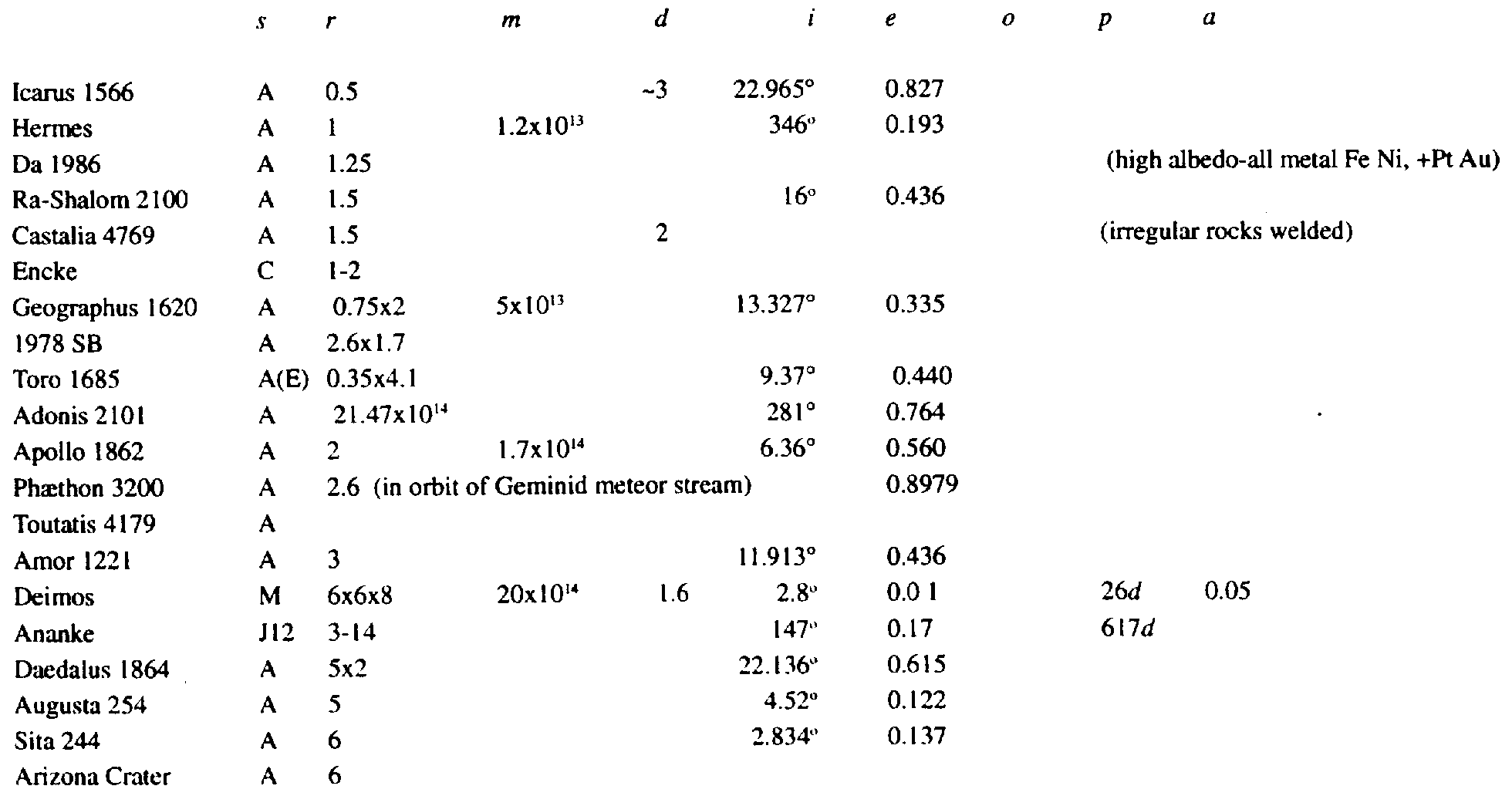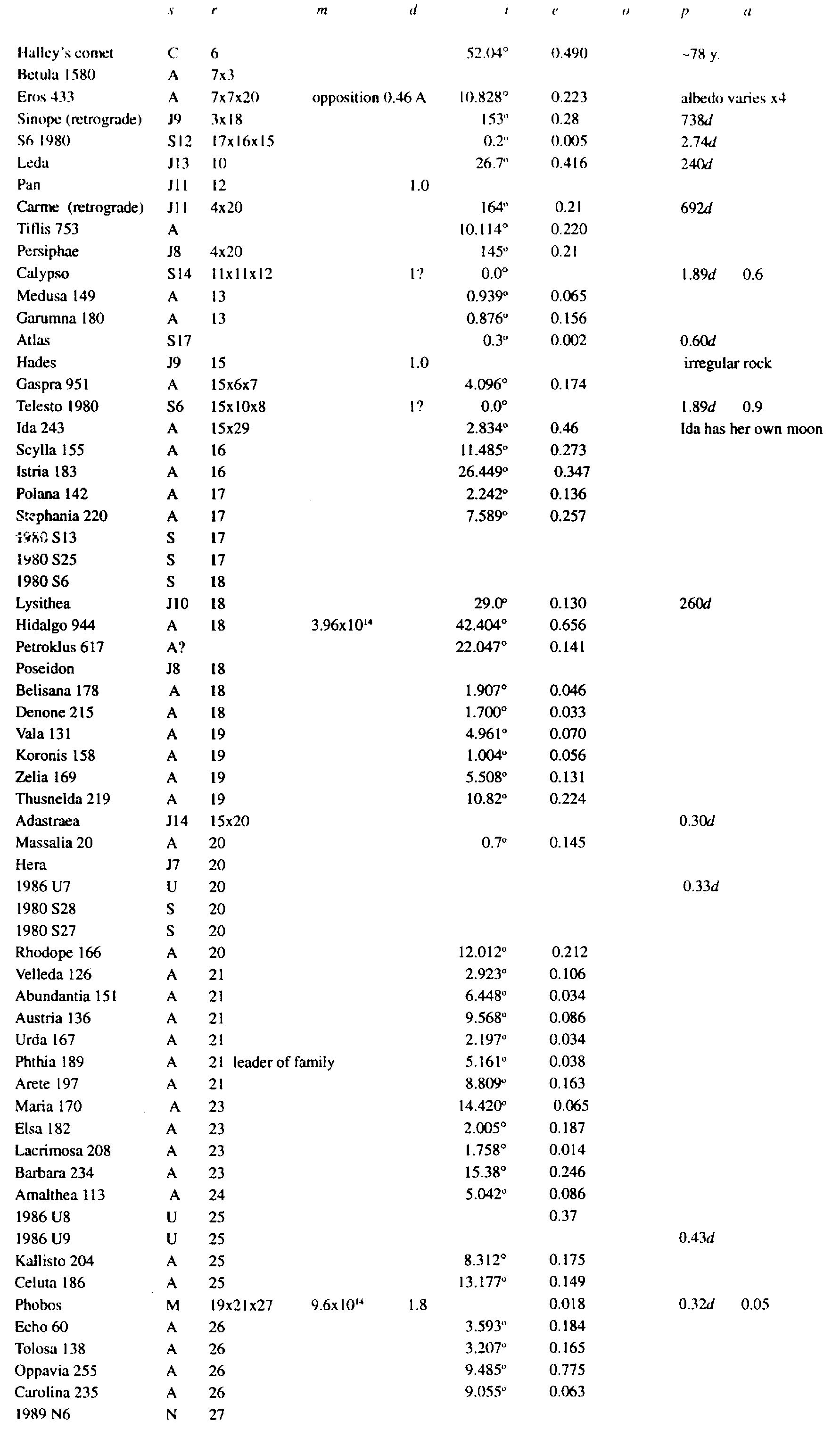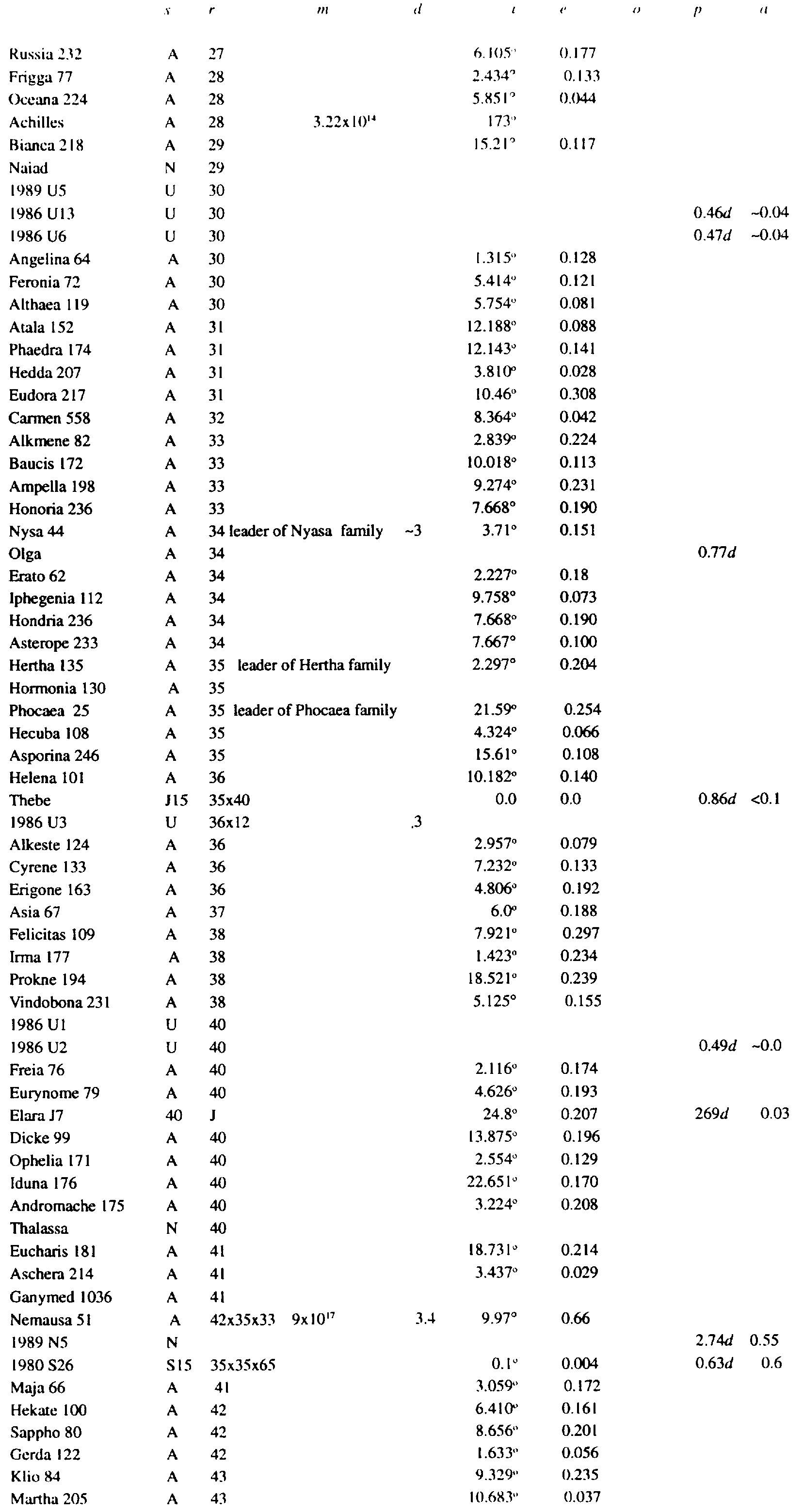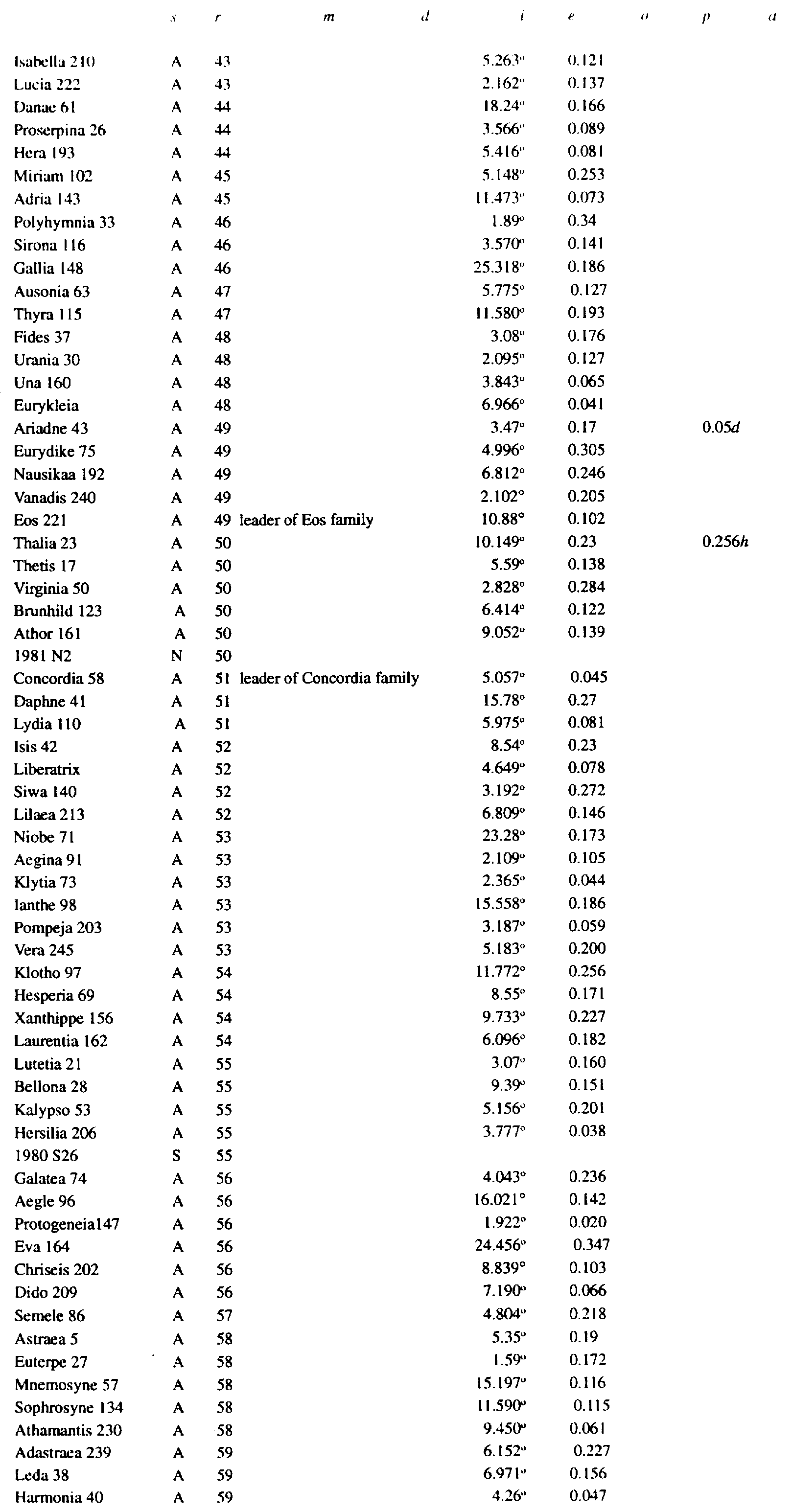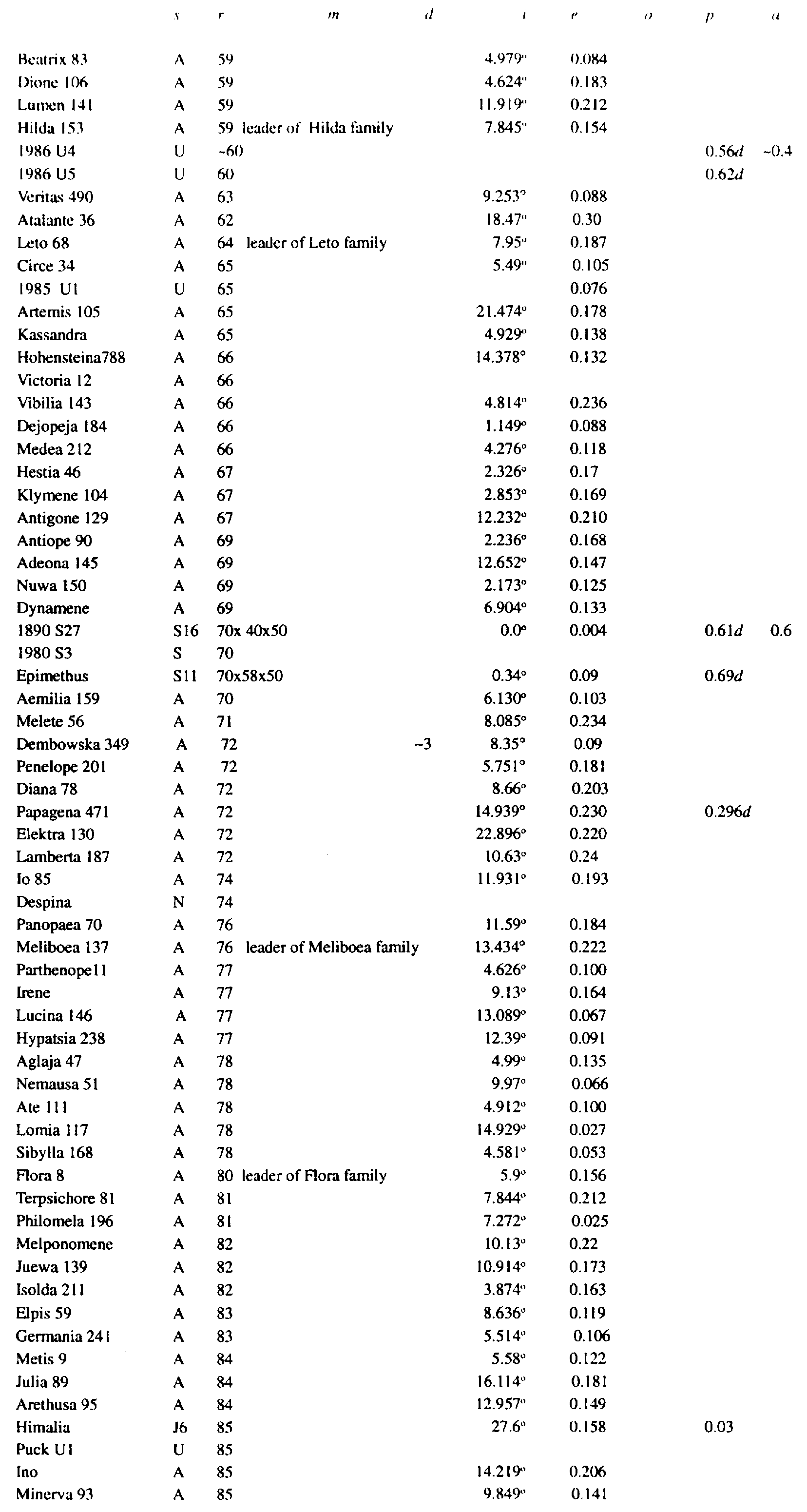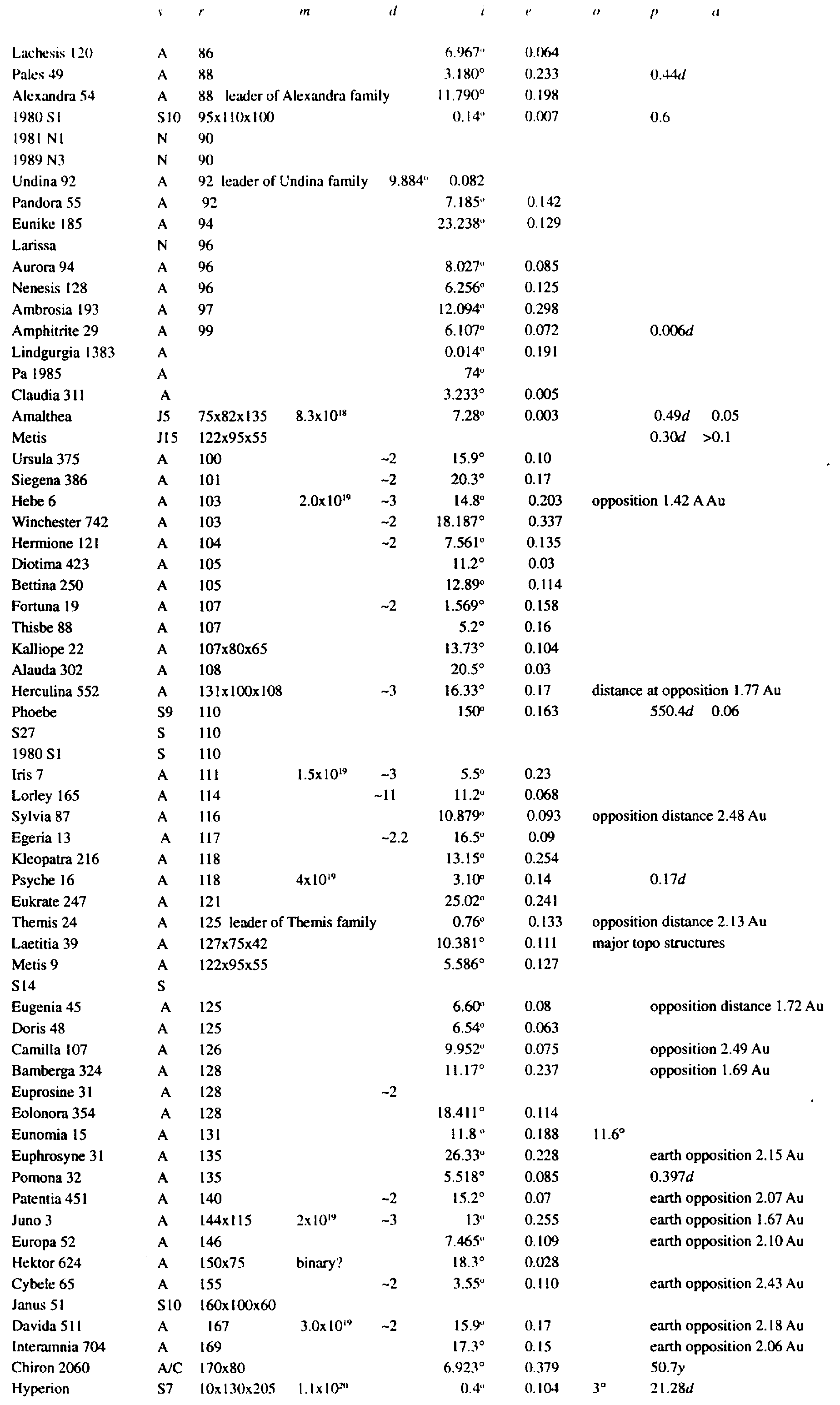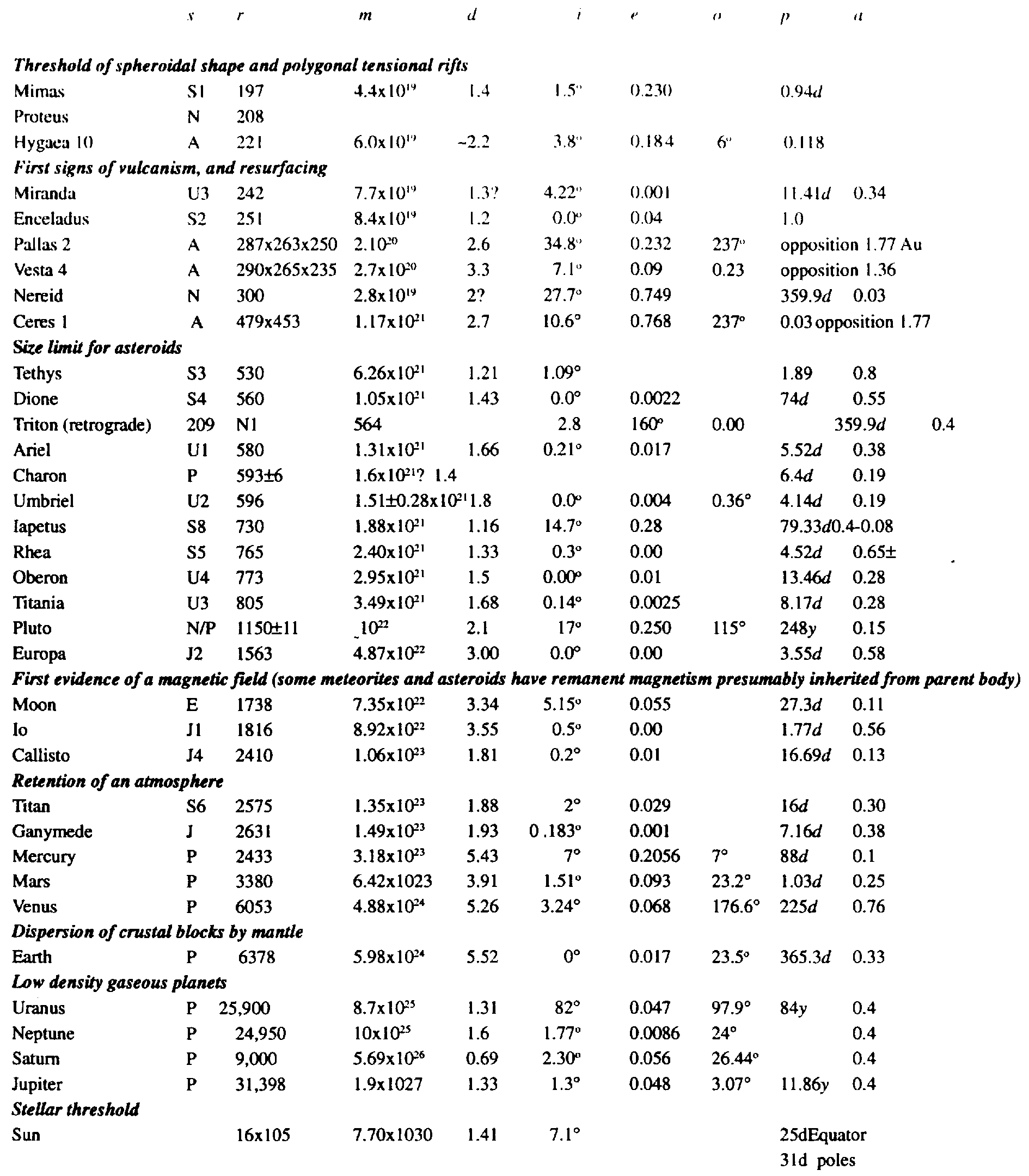Return
Appendix
1
Members
of the Solar System
This appendix
attempts to list in order of size the members of the solar system of radius
ten kilometers or more in increasing order of size. There are probably
a million asteroids of a kilometer or more and vast numbers of still smaller
bodies. The Earth alone sweeps up more than 105 tonnes of cosmic
dust per year Also vast numbers of meteorites, mini-asteroids, orbit the
sun. Some 5000 asteroids are known, so the table is restricted to about
one tenth of these, to give a statistical sample. Many asteroids of more
than a kilometer in radius have yet to be sighted and their orbits plotted.
The bodies
are not a homogeneous series. Asteroids are certainly fragments of larger
bodies (some are thus grouped into cognate families), and these larger
bodies were perhaps parts of a larger planet which disintegrated at the
end of the Mesozoic. But to exclude them would still leave the planet-satellites,
many of which may be captured asteroids. The series does show that many
properties (shape, volcanism, atmosphere, magnetism, gross fracture
pattern) progresses with size.
In the table,
new asteroids are specified by the year of their discovery followed by
a letter indicating the half month of their detection. After their orbits
have been determined, they receive a formal name and a serial number in
order of their listing, for example, Ceres 1, Pallas 2, Juno 3, Vesta 4,
and so on through to Ra-Shalom 2100.
In the table,
the hierarchical status s is indicated
by a letter:
A asteroid,
C comet,
P a
planet of the sun,
M a
satellite of Mercury,
E of
Earth,
M of
Mars,
J of
Jupiter,
S of
Saturn,
U of
Uranus,
N of
Neptune, and
P of
Pluto.
The
radius r is in kilometers, the mass m in kilograms;
density d, the inclination i of the orbit to
the ecliptic, the ellipticity e of the orbit, obliquity o
of the rotation axis to the orbit plane, the orbital period p,
and the albedo a, may also be given.
The
radius r is in kilometers, the mass m in kilograms;
density d, the inclination i of the orbit to
the ecliptic, the ellipticity e of the orbit, obliquity o
of the rotation axis to the orbit plane, the orbital period p,
and the albedo a, may also be given.
The
radius r is in kilometers, the mass m in kilograms;
density d, the inclination i of the orbit to
the ecliptic, the ellipticity e of the orbit, obliquity o
of the rotation axis to the orbit plane, the orbital period p,
and the albedo a, may also be given.
The
radius r is in kilometers, the mass m in kilograms;
density d, the inclination i of the orbit to
the ecliptic, the ellipticity e of the orbit, obliquity o
of the rotation axis to the orbit plane, the orbital period p,
and the albedo a, may also be given.
The
radius r is in kilometers, the mass m in kilograms;
density d, the inclination i of the orbit to
the ecliptic, the ellipticity e of the orbit, obliquity o
of the rotation axis to the orbit plane, the orbital period p,
and the albedo a, may also be given.
The
radius r is in kilometers, the mass m in kilograms;
density d, the inclination i of the orbit to
the ecliptic, the ellipticity e of the orbit, obliquity o
of the rotation axis to the orbit plane, the orbital period p,
and the albedo a, may also be given.
The
radius r is in kilometers, the mass m in kilograms;
density d, the inclination i of the orbit to
the ecliptic, the ellipticity e of the orbit, obliquity o
of the rotation axis to the orbit plane, the orbital period p,
and the albedo a, may also be given.
A
asteroid, C comet,P
a planet of the sun,M a satellite of Mercury,E of Earth,
M of Mars, J
of Jupiter,S of Saturn, U
of Uranus, N of Neptune,
and P of Pluto.
Return
